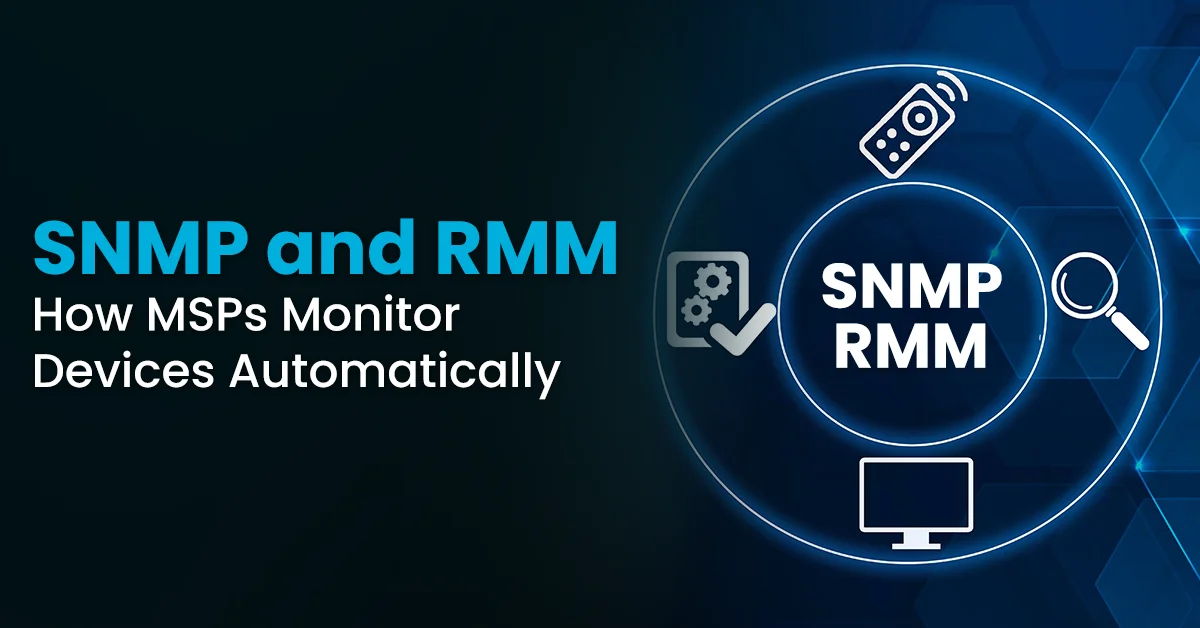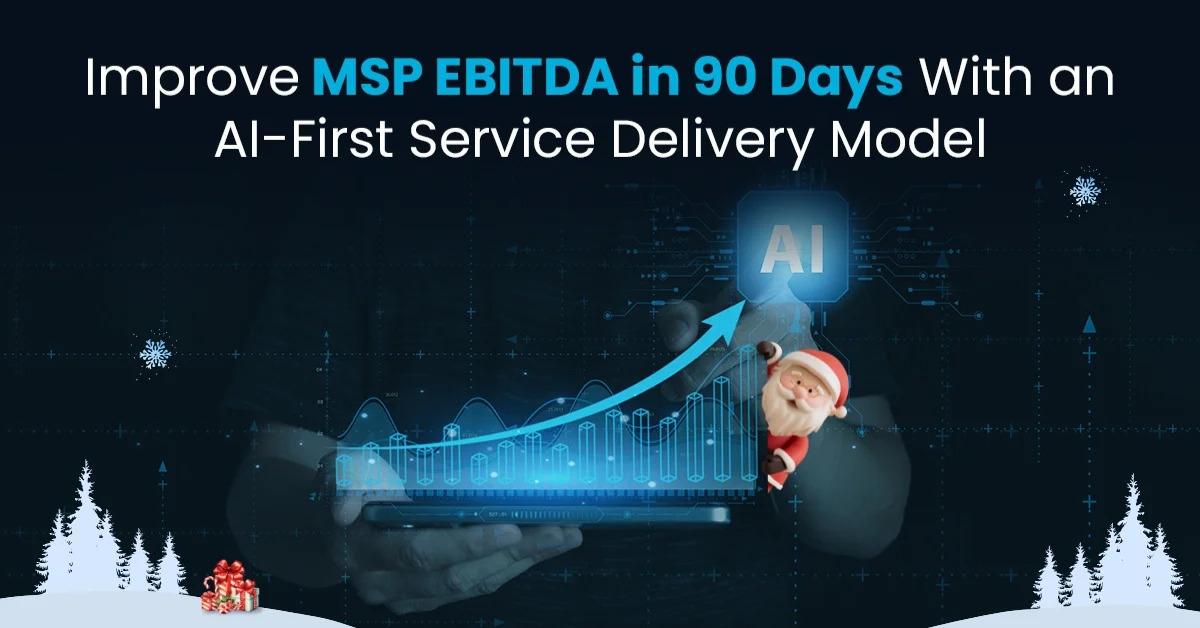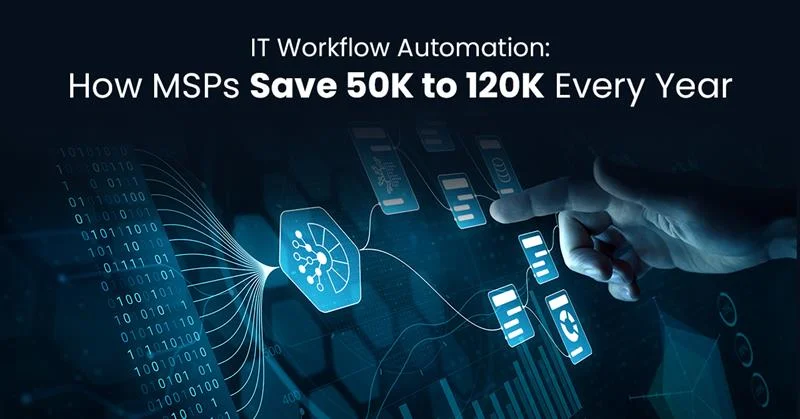Managing hundreds of devices across multiple client networks manually is impossible at scale. SNMP MSP Monitoring solves this by automating device tracking through RMM Services for MSPs, turning scattered visibility into centralized control. Without automation, MSPs face missed issues, frustrated clients, and broken SLAs.
Downtime costs businesses an average of $427 per minute, and for MSPs juggling dozens of clients, that number multiplies fast. One missed alert can cascade into multiple client outages, damaged relationships, and revenue loss. This is where SNMP MSP Monitoring combined with RMM Tools for MSPs becomes essential, not optional.
The global SNMP monitoring tool market is projected to reach $3.2 billion by 2031, growing at a 10.5% CAGR, and that growth reflects one truth: automated network monitoring is how competitive MSPs operate today. Let’s explore how Simple Network Management Protocol (SNMP) and RMM platforms work together to give MSPs complete visibility and control across every client environment.
What is SNMP MSP Monitoring?
SNMP MSP Monitoring uses Simple Network Management Protocol (SNMP) to automatically collect performance data, health metrics, and configuration details from network devices across multiple client environments. Think routers, switches, firewalls, printers, servers, UPS systems, wireless access points, and pretty much any IP-connected device that supports the protocol.
Understanding Simple Network Management Protocol (SNMP) for MSPs
Simple Network Management Protocol (SNMP) creates standardized communication between monitoring systems and network devices. It doesn’t matter if you’re monitoring Cisco, Dell, HP, or any other vendor. SNMP provides a common framework that works across different manufacturers and device types.
SNMP MSP Monitoring operates through three core components:
- SNMP Manager: Your monitoring server that requests and collects data
- SNMP Agent: Software installed on devices that responds to requests and sends alerts
- MIB (Management Information Base): The database structure that defines what information can be collected from each device
The protocol has evolved through three versions. SNMPv1 and SNMPv2c offer basic functionality but lack security. SNMPv3 adds authentication and encryption, making it the preferred choice for MSPs handling sensitive client data.
Why MSP Device Monitoring Requires Automated Solutions
Here’s the scaling problem: one technician can manually check maybe 20 to 30 devices per hour. If you’re managing 500 devices across 20 clients, that’s 25 hours of work just to complete one monitoring cycle. And by the time you finish checking the last device, the first one might already have problems.
MSP technologies like continuous monitoring detect and manage misconfigurations faster, reducing downtime and leading to faster fixes. Automated Network Monitoring through SNMP catches issues in real time, the moment thresholds are breached or configurations change unexpectedly. Your team gets alerts instantly instead of discovering problems hours or days later when clients call to complain.
How RMM Tools for MSPs Enable SNMP MSP Monitoring
RMM Tools for MSPs integrate SNMP capabilities directly into their platforms, eliminating the need for separate monitoring systems. Popular platforms like ConnectWise Automate, Datto RMM, NinjaOne, Atera, and Syncro all include built-in SNMP functionality that works right out of the box.
Integration of SNMP with RMM Platforms
Modern RMM Tools for MSPs combine SNMP data with other monitoring metrics in unified dashboards. You see network device health alongside endpoint status, backup completion, patch compliance, and security alerts. Everything lives in one interface instead of forcing technicians to jump between multiple systems.
Automated device discovery scans networks for SNMP-enabled devices without manual configuration. The RMM platform detects devices, identifies their type, maps appropriate MIB templates, and begins collecting data. New devices get picked up automatically during regular scans, keeping your inventory current without manual updates.
SNMP Device Discovery and Configuration in RMM Tools
Setting up SNMP MSP Monitoring in RMM platforms is straightforward. The system scans defined network ranges, detects devices responding to SNMP queries, and automatically configures monitoring based on device type. Default community strings like “public” and “private” get tested first, though smart MSPs change these immediately for security.
RMM Tools for MSPs include extensive MIB libraries and OID templates for common devices. When the system discovers a Cisco switch, it automatically knows which performance metrics to track. Dell servers get different monitoring profiles than HP printers. This template-based approach accelerates deployment and ensures consistent MSP Device Monitoring across all clients.
Active vs Passive SNMP Monitoring Methods
SNMP MSP Monitoring uses two approaches for different scenarios:
- Passive monitoring polls devices at scheduled intervals, requesting current status and performance data. Standard polling intervals range from 5 to 15 minutes for most devices, with critical infrastructure checked every 1 to 5 minutes. This method provides regular snapshots without generating excessive network traffic.
- Active monitoring sends test packets to simulate traffic and measure response times. This approach validates network connectivity and performance under realistic conditions. Active monitoring catches issues that passive polling might miss, like intermittent packet loss or latency spikes.
Key Benefits of Automated Network Monitoring with SNMP
SNMP MSP Monitoring transforms how MSPs manage client infrastructure by shifting from reactive problem-solving to proactive maintenance.
Real-Time Device Visibility Across Client Networks
Continuous monitoring provides instant visibility into device health across all client environments simultaneously. CPU utilization, memory usage, bandwidth consumption, port status, and temperature sensors all get tracked in real time. When something changes, you know immediately.
SNMP Traps send instant alerts when specific events occur. A switch port fails, CPU usage hits 90%, storage reaches capacity, or environmental sensors detect overheating. These unsolicited messages arrive at the monitoring system within seconds, triggering immediate investigation before minor issues become major outages.
Proactive Problem Detection Before Clients Notice
Threshold-based alerting reduces noise while catching critical issues. You don’t get alerted every time CPU usage ticks up to 60%. You get alerted when it exceeds 85% for more than 5 minutes, indicating a real problem requiring attention.
Baseline establishment helps identify abnormal behavior patterns. If a router typically passes 50GB of traffic daily and suddenly jumps to 150GB, that anomaly triggers investigation. Maybe it’s legitimate business growth, or maybe it’s a data exfiltration attempt.
Scalability for Multi-Tenant MSP Environments
SNMP MSP Monitoring scales from single devices to tens of thousands without architectural changes. The standardized protocol works the same whether you’re monitoring 10 devices for one client or 10,000 devices across 100 clients. That scalability matters as your MSP grows.
Template-based monitoring accelerates new client onboarding. Instead of configuring monitoring from scratch for each device, you apply proven templates for routers, switches, servers, and other equipment types. New clients get comprehensive monitoring deployed in hours instead of days.
Best Practices for SNMP MSP Monitoring Implementation
Success with SNMP MSP Monitoring requires more than just turning on monitoring. These practices separate effective implementations from problematic ones.
Setting Up Effective Alert Thresholds
Customize thresholds based on device type, client requirements, and historical baselines. A database server needs different CPU thresholds than a print server. Client SLAs might demand more aggressive alerting for critical infrastructure versus secondary systems.
Avoid alert fatigue by setting thresholds that trigger only when action is genuinely needed. Too many false positives train technicians to ignore alerts, which means they’ll miss real problems buried in the noise. Start conservative and adjust based on actual incident patterns.
Security Configuration for Simple Network Management Protocol
Use SNMPv3 with authentication and encryption whenever possible. The older SNMPv1 and SNMPv2c versions transmit community strings in clear text, making them vulnerable to interception. SNMPv3 adds SHA1 or MD5 authentication plus data encryption.
Change default community strings immediately during device setup. The default “public” string is universally known and provides read access to anyone who tries it. Custom, complex community strings function like passwords and deserve similar protection.
Implement read-only access unless configuration changes through SNMP are specifically required. Most MSP Device Monitoring scenarios only need to read data, not modify device configurations. Read-only access limits potential damage from compromised credentials.
Optimizing SNMP Polling and Data Collection
Balance polling frequency with network bandwidth and device load. Polling every 30 seconds provides near real-time data but generates more network traffic and device processing overhead. Most devices handle 5-minute polling intervals without issues while keeping data fresh enough for effective monitoring.
Use GetBulk commands in SNMPv2c and SNMPv3 for efficient multi-value retrieval. GetBulk requests multiple OID values in single queries, reducing the total number of network packets needed. This optimization matters when monitoring thousands of devices across WAN connections.
Common SNMP MSP Monitoring Challenges and Solutions
Even well-designed SNMP implementations face predictable challenges. Knowing these issues in advance helps you avoid them.
1: Device Discovery and Visibility Issues
Challenge: SNMP-enabled devices don’t appear during network scans because of incorrect subnet configurations, firewalls blocking SNMP traffic, or disabled SNMP agents.
Solution: Verify SNMP is enabled on all devices, confirm firewall rules permit UDP port 161 traffic, and ensure network scans cover all relevant subnets. Regular discovery scans catch newly added devices that might otherwise slip through.
2: Managing False Positives and Alert Overload
Challenge: Too many irrelevant alerts causing technician burnout and genuine problems getting missed in the noise.
Solution: Establish baseline metrics for each device type before configuring alerts. Fine-tune thresholds based on actual usage patterns rather than generic defaults. Implement automated remediation where practical, like automatically restarting services or clearing temporary files when specific conditions occur.
3: Multi-Vendor Environment Complexity
Challenge: Different vendors implement SNMP and MIBs differently, requiring vendor-specific OIDs and custom configurations.
Solution: Leverage RMM Tools for MSPs with extensive MIB libraries covering major vendors. Use community-shared templates for uncommon devices. Document custom OIDs and configurations for specialized equipment to ensure consistency across your team.
Transform Your Monitoring with IT By Design’s RMM Services
Manual monitoring doesn’t scale. Alert fatigue burns out technicians. Visibility gaps lead to missed issues and client dissatisfaction. Without proper Automated Network Monitoring infrastructure, MSPs struggle with reactive firefighting instead of proactive management.
IT By Design’s RMM Services solve these challenges with comprehensive SNMP MSP Monitoring integration.
Our platform delivers pre-configured templates for major vendors, automated device discovery across all client networks, security-hardened SNMPv3 configurations, intelligent alert management that eliminates false positives, and 24/7 expert support from certified technicians.
Stop leaving clients vulnerable to undetected issues. IT By Design’s RMM Services provide the infrastructure and expertise needed for enterprise-grade MSP Device Monitoring.
Ready to transform your device monitoring from reactive chaos to proactive control?
Schedule a call with us today to discover how proper SNMP MSP Monitoring becomes your strongest competitive advantage.
FAQs (Frequently Asked Questions)
Q. What is SNMP MSP Monitoring?
A. SNMP MSP Monitoring uses Simple Network Management Protocol to automatically collect performance data from network devices across multiple client environments through RMM platforms, enabling proactive issue detection and centralized visibility.
Q. What devices can be monitored using SNMP?
A. SNMP monitors routers, switches, firewalls, servers, printers, UPS systems, wireless access points, load balancers, storage devices, and most IP-connected network equipment that supports the protocol.
Q. Which SNMP version should MSPs use?
A. MSPs should use SNMPv3 whenever possible for its authentication and encryption features, though SNMPv2c offers better performance for non-sensitive environments and legacy devices may only support SNMPv1.
Q. Do RMM tools include SNMP monitoring?
A. Most modern RMM Tools for MSPs include built-in SNMP monitoring with automated device discovery, customizable templates, alert configuration, and centralized dashboards at no additional cost.
Q. How often should SNMP devices be polled?
A. Standard polling intervals range from 5 to 15 minutes for most devices, with critical infrastructure polled every 1 to 5 minutes and less important devices checked every 30 to 60 minutes.








